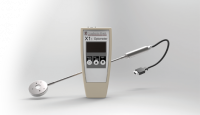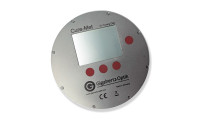This product is no longer manufactured. Remaining stock may still be available. Please refer to the alternatives listed below under "Similar products" or contact us directly.
Alternative Products for this discontinued product:
RCH-xxx Series
UV Detectors for measuring the UV Curing Irradiance
- Low UV aging
- Temperature resistance
- Thin housing
- Large measuring area
- Narrow band sensitivity
- Large dynamic range
- Safe handling
- Traceable calibration
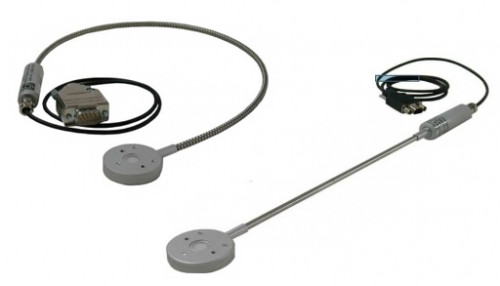
General Design Considerations for UV Curing Detectors
UV radiation detectors for use in UV curing must have special design and functional features in order to offer reliable measurement values in demanding applications:
- Low UV aging: High intensity UV radiation is necessary for curing, but UV radiation also has a negative impact on the long-term stability of the detector.
- Temperature resistance: In applications with high-intensity irradiation levels, the operating temperature of the UV detector is generally significantly higher than in other industrial applications. The influence of temperature on the UV photodiode and optical filters greatly increases the measurement uncertainty.
- Thin housing: The UV dose must be measured as close as possible to the product, since in diffuse lighting the effective irradiance decreases with the distance from the light source.
- Large measuring area: Small measuring areas increase the measurement uncertainty of non-uniform illumination.
- Narrow band sensitivity: Especially in applications with medium pressure lamps, the spectral sensitivity of the detector must be limited to the actinic spectral range of the photo initiators in order to measure only effective radiation.
- Large dynamic range: For precise measurement results at different intensities.
- Safe handling: The skin and eyes of the operator should have the necessary safety distance from UV radiation and high temperature during the measurement.
- Traceable calibration: UV radiometers for use in accredited processes require a calibration certificate that shows the traceability of the calibration. ISO / IEC 17025 certificates for measuring devices are required in some industries.
Product description RCH-xxx irradiance detectors
The RCH-xxx series detectors were specially developed for use in industrial UV curing processes. See also our application note about general UV curing measurements. Thanks to their properties and characteristics, they offer consistently reliable measurement values.
To measure irradiance, the optical radiation is detected at the location where it is required to affect the product. The radiation is sensed by a temperature-resistant radiation integrator (RADIN) with a cosine corrected field of view (low f2). The high radiation attenuation of the RADIN minimizes the exposure of the photodiode and the optical filter to UV and high temperatures thereby slowing down their aging (Figure 1). The RADIN, the filter and the photodiode are also pre-aged with UV radiation. This significantly slows down the inevitable aging process that occurs from exposure to UV radiation. With all these measures, the detectors of the RCH-xxx series show very little aging effects even in intensive use. Any changes are also recorded and corrected as part of the recommended annual recalibrations. With a diameter of nine millimeters, the detector offers a very large sensor area and is very thin with an overall height of only 8 mm.
The photodiodes used in the RCH detectors are only sensitive in the short-wave spectral range. This effectively suppresses longer-wave radiation and, in conjunction with optical band-pass filters, ensures only the effective radiation in the actinic spectral range of the photoinitiators is measured, as shown for medium pressure lamps in Figure 2 for example.
For UV-A LED sources, there are detectors that offer an almost wavelength-independent sensitivity. In conjunction with spectral calibration points for common LED wavelengths, this enables precise measurement of the irradiance of high-intensity LED-based emitters (Figure 3). In addition to a selection of catalog products (see ordering information), further detectors are available on request.
The photodiodes of the RCH-xxx detectors offer a strictly linear relationship between measurement signal and irradiance in the range from a few pico amps (10-12 A) to several micro amps (10-6 A). In conjunction with the measuring devices (optometers) of Gigahertz-Optik, the user has a linear measuring range from 0.1 mW / cm² to 40,000 mW / cm². The RCH-xxx series detectors offer a range of spectral measuring functions and two types of construction (see ordering information).
The light guide connection between the RADIN and the handle that houses the photodiode-filter assembly can be either rigid (Figure 4) or flexible (Figure 5). Due to the distance of 25 cm between the RADIN and handle, both versions offer good UV radiation protection in use (Figure 6). The stainless steel jacket offers low heat conduction and is UV-resistant. The version with a rigid light guide is recommend for robust applications. The minimum bend radius of the flexible light guide is 50mm.
Trend to UV Curing supported by NIR LEDs
The special version RCH-017 and RCH-117 are especially designed for NIR LEDs used in curing applications to enhance the viscosity or heating up the adhesive.
UV Curing Meters
Beside our application note about general UV curing measurements we provide an product overview about UV curing meters.
Calibration
Reliable measurements in absolute units require the calibration of measuring devices that can be traced back to standards from national measurement institutes.
Since 1993, the Gigahertz-Optik measuring laboratory has been accredited as a calibration laboratory by the PTB (Physikalisch-Technische Bundesanstalt) and the DAkkS (German Accreditation Body) for the measurement of spectral sensitivity and spectral irradiance. Since then, all factory calibrations have been closely based on the calibration standards and quality management of the accredited calibration laboratory. Therefore, the factory calibrations of Gigahertz-Optik offer the highest possible level of traceability and have been accepted worldwide for many years.
In accordance with the requirements of individual industrial sectors, part of the measuring laboratory was accredited by the DAkkS in 2019 as a DIN EN ISO / IEC 17025 test laboratory. As a result, Gigahertz-Optik can optionally offer a DIN EN ISO / IEC 17025 test certificate for their UV radiometers in addition to the factory certificate.
- The RCH-xxx detectors for use with medium pressure discharge lamps are calibrated using a spectral broadband standard. With this strategy, the imperfections of the detector’s radiometric spectral sensitivity are taken into account much more precisely than with the alternative technique of calibration with a monochromatic calibration lamp in the spectral region of the detector’s peak sensitivity.
- The RCH-xxx detectors for use with LEDs are calibrate for their spectral sensitivity. For the measurement, the wavelength that is closest to the wavelength of the LED must be select on the measuring device.
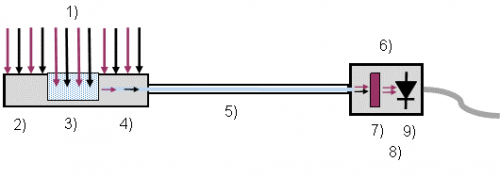
Figure 1. Schematic diagram. 1) High intensity UV and IR radiation; 2) 8mm thick housing; 3) RADIN element; 4) low intensity UV and IR radiation; 5) UV fiber with stainless steel jacket 6) Sensor housing (handle) with cable to the measuring device; 7) UV band-pass filter; 8) Low intensity UV radiation 9) UV photodiode.
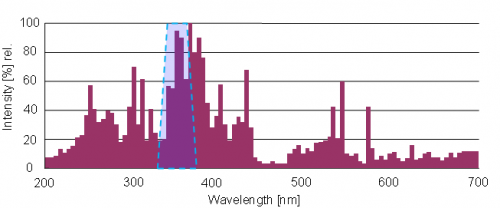
Figure 2. Principle spectral sensitivity of a 365 nm UV-A detector shown together with the typical emission spectrum of an iron-doped UV medium pressure lamp.
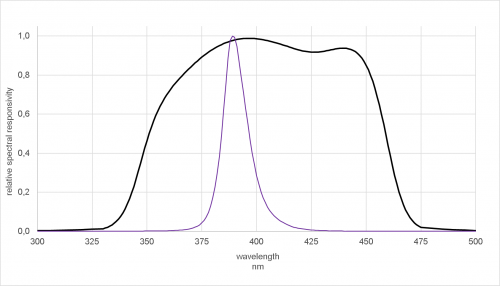
Figure 3. Typical spectral sensitivity of a UV-A-BLUE detector for use with LEDs shown with the emission spectrum of a 385 nm high-performance LED (HLED).
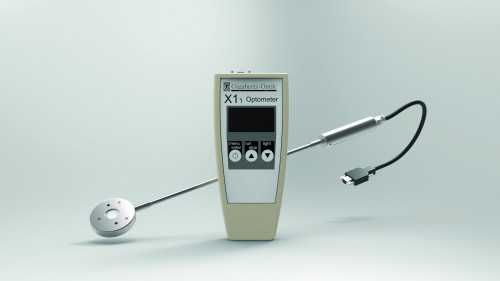
Figure 4. RCH-1xx type detector with rigid connection between the RADIN and handle, shown with the optional X1-1 measuring device.
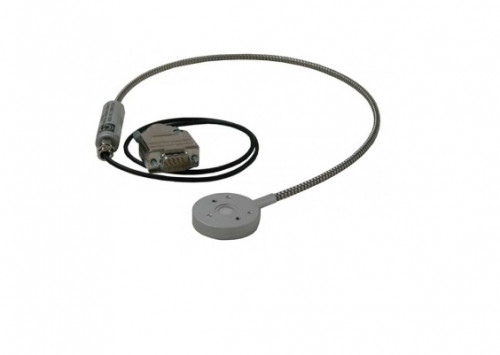
RCH detect head
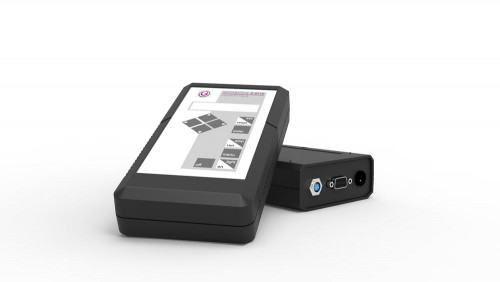
Figure 5. RCH-0xx type detector with flexible connection between RADIN and handle, shown with the optional measuring device P-9710-2
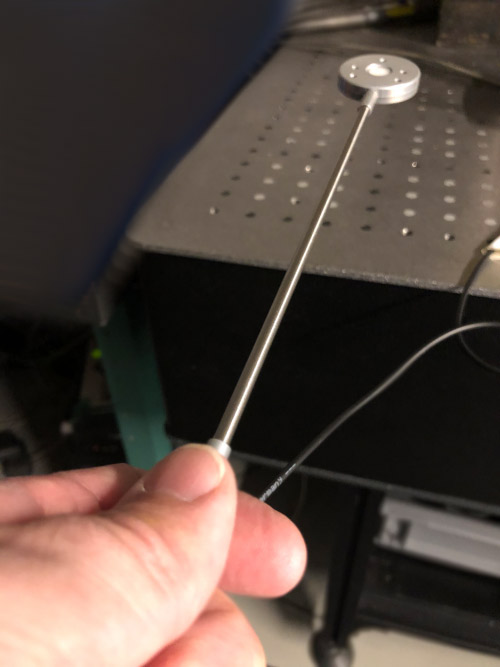
Figure 6.The distance of 25 cm between the handle and the RADIN offers a sufficient safety distance from UV radiation in many applications.
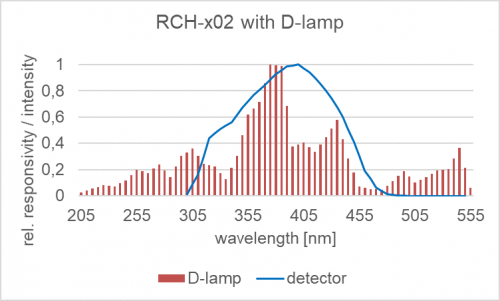
Relative spectral sensitivity of the RCH-x02 detectors together with the typical emission spectrum of a doped discharge lamp.
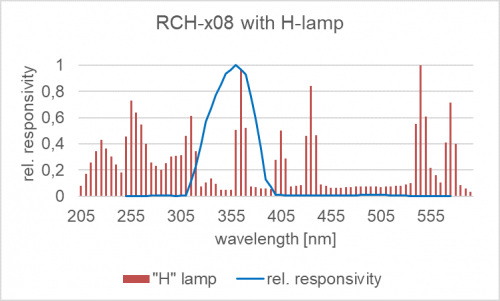
Relative spectral responsivity of the RCH-x08 detectors together with the typical emission spectrum of a mercury lamp.
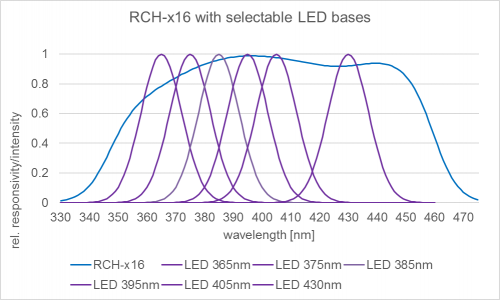
Relative spectral sensitivity of the RCH-116 detector together with typical UV LED emission spectra
Similar Products
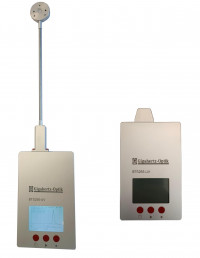
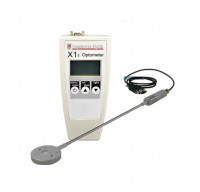
Product Categories
